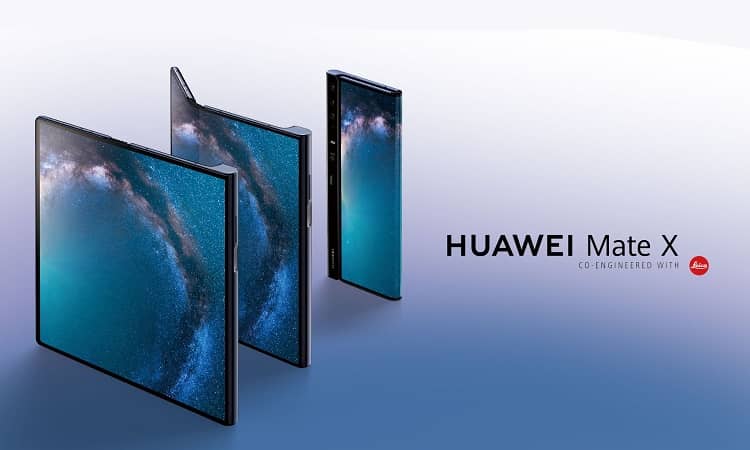5G and foldable phones seem to be the two watchwords emerging this year and two of the world’s top smartphone giants are determined to fight it out. Mobile World Congress 2019 in Barcelona has seen Huawei introduce the Huawei Mate X and 5G CPE Pro while Samsung showed off the Samsung Galaxy Fold.
The Huawei Mate X features a 6.6-inch dual display panel which expands into an 8-inch tablet. Aside from that, another notable feature on this phone is the Balong 5000 modem chipset which gives it the capacity to run on 5G networks.
Meanwhile, Samsung’s champion, the Galaxy Fold has a 4.5-inch display and folds out into a 7.3-inch tablet. There will apparently be different variants of the Fold of which the lowest-end model will not have 5G capabilities. Although there is no official word on the technical aspects of the Galaxy Fold and 5G, it is likely to feature the Exynos Modem 5100 which Samsung announced last year.
Aside from these key updates both the Mate X and Galaxy Fold are making use of already announced technologies such as the Exynos 9820 chipset and Kirin 980. Both are top-of-the-line Arm Cortex SoCs which make use of Mali GPUs and have dedicated AI integration.
Aside from the phones, Huawei went a step further with the introduction of the Huawei 5G CPE Pro. The Customer Premise Equipment (CPE) is a router aimed at providing ultra-high-speed broadband and intelligent Dual-link features. It is also powered by the Balong 5000 and will potentially be one of the first devices to help consumers take advantage of any potential 5G network deployments.
What is 5G and is it Better?
4G is currently a common network band used around the world and when first introduced back in the late 2000s boosted existing speeds by 500 times. This allowed for an explosive growth in data use for things like multimedia streaming, VoIP technologies and the like.
The problem is that due to the rapidly increasing number of devices needing a slice of 4G bandwidth, networks might not be able to cope. The Internet of Things (IoT) phenomena has contributed to the growth in devices and estimate are that there will be more than 30 billion connected devices by 2020.
That is where 5G is expected to help. Aside from massive speed increases which some say will likely make fibre broadband speeds look slow, the main benefit is expected to be lower latency. Latency is the time calculated from when devices try to communicate with each other. A lower latency increases the application potential of 5G in various devices – not just limiting it to smartphones.
Is 5G Ready to Use?
The issue now is that 5G phones need 5G networks to make use of that increased potential. Upgrading global 5G infrastructure is a significant investment move that will involve new spectrums, RAN infrastructure, fiberization, antenna densification and much more.
According to a Zion Market Research report, the value of this market will hit around $22.5 billion by 2025. A significant amount which governments and network operators will have to bear the brunt of. More importantly, 5G also must face up to increased security requirements.
To date 67 telcos in 39 countries have announced their intention to deploy 5G before 2022. In November 2018 Malaysian Communications and Multimedia Commission (MCMC) made the call for collaboration on 5G testbeds, but that was with an aim to “explore the practical uses and modes of implementation of 5G as well as to learn and iron out policies, regulations and spectrum planning of 5G.”
There have been other moves though, such as the collaboration here between edotco Malaysia and Huawei which have signed an MoU to implement Digital Mobile Network Solutions to deliver next generation telecommunication solutions to mobile network operators. Maxis has also been running 5G trials internally and is hoping to expand those trials with real customers soon.
Huawei Mate X and Samsung Fold: Ahead of the Times
Since 5G is off the table for the moment, the whopping prices that these two devices clock in at have relegated their key selling points to foldable screens. Although the world has been clamouring about the lack of innovation in mobile devices, hinging on this single feature at announced prices is a little shaky.
The Huawei Mate X is expected to price for around $2600 while the Samsung Galaxy Fold starts at around $1980 for the LTE (4G) model. 5G models of the Galaxy Fold will retail at well over that price. Pretty steep a buy-in price to be the first to use a phone with a foldable screen.


